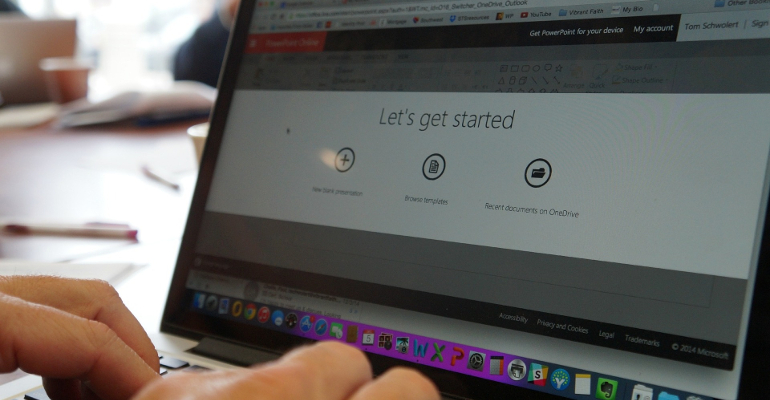
How to Bootstrap your Startup Like a Boss, Pt. 1: Bootstrapping Fundamentals
I am always fascinated by the art of bootstrapping.
By bootstrapping, we refer to the process of using one’s own finances, perseverance and resourcefulness to launch, build and grow a new company.
Entrepreneurs that bootstrap their businesses refrain from accepting outside funding from Angel investors or Venture Capitalists.
There are several examples of companies that started with a small amount of money, or even with no money at all and just sweat equity, and went on to become juggernauts in their industry.
There is no universal right or wrong answer to the question of whether you should bootstrap your company or not. It depends on the type of venture you are launching, your previous experience, your current financial situation and more.
The truth is though that the vast majority of startups, and small businesses in general, are bootstrapped companies.
For this reason, it is useful to study successful bootstrap businesses and listen to people that have experience with the process.
One of these people is Oussama Ammar, cofounder and partner at The Family.
The Family is a platform that unites entrepreneurs across Europe in Paris, London and Berlin and has a mission to educate entrepreneurs, build an infrastructure to empower them and build a privileged access to smart investors.
They have a fancy and a bit weird-looking website, but their content is super valuable, especially the essays that they write.
Recently I had the chance to watch an excellent presentation by Oussama on the subject and I wanted to present the main lessons from it, analyze them, comment on them and build on top of them.
Thus, during the following weeks I will be publishing a series of posts where I will elaborate on Oussama’s presentation.
While reading my articles, you can also watch the presentation. Oussama has a funny French accent, but he provides invaluable information and thought-provoking stories.
He is very entertaining and knowledgeable at the same time, a rare combination. Here is the presentation on Youtube:
Are you ready? Let’s dive into it!
Want to get my eBook "From Employee to Online Entrepreneur" as a nice PDF? Download it below!
Bootstrapping vs. Fundraising
As I mentioned, bootstrapping means launching a company and growing it only by virtue of its own revenues. Initially, you might use a small amount of capital (from friends and family or your own savings) to get things rolling, but you don’t get outside funding (either because you can’t or you won’t).
The opposite is the act of getting funded, which means attracting capital from external investors who will provide you with the money in exchange for a part of your business. The process of raising that outside capital is called fundraising.
The general logic behind the “equity for capital” exchange is that the additional capital will allow the company to grow faster and focus on its (revenue) growth.
There is no inherently right or wrong approach to whether you should bootstrap or not. Perhaps the optimal thing to do is to bootstrap initially, validate your concept, generate significant revenue on your own, and then bring external investors to take your company to the next level.
Bootstrapping is Hard but Rewarding
As I have said in the past, building a business is damn hard, especially if it is your first time doing it. There are multiple factors that you have no control of, the process is stressful and a lot of hard work is needed.
The difficulty is magnified when you lack the financial and other resources, and you opt for bootstrapping in order to make things happen.
At the same time though, it is extremely rewarding to have built something that the market wants. Humans have evolved to become builders, so we love it when we create something out of nothing.
Having people pay and enjoy a product that you have created is an exhilarating feeling. In any project or venture, getting your first sale is an important milestone that should be celebrated.
Fundraising on the other hand, albeit important, does not prove much. It might help your business succeed or it might help it crash faster. After all, 75% of venture backed startups fail.
Oussama also highlights a very important fact. When you have a business with solid cashflow and rising revenue numbers, it is much easier to negotiate with investors. If and when you decide to fundraise, you will be in a position of power and you will be able to do it on your own terms.
Having traction, a growing number of users and an increasing level of revenue gives you leverage in the negotiation. You own your own destiny.

Start with Nothing
There are numerous examples of entrepreneurs that started with nothing and went on to build massively successful companies. From Michael Dell who started Dell with $1,000, to John Paul DeJoria who went from homeless to Billionaire, the stories abound.
A common myth that prevails though, is one that goes like this: You have a brilliant idea, you pitch it to investors, you fundraise, you use that money in your business and then you become successful.
For better or for worse, this is not the case. Fundraising can be degraded to just a vanity event, unless you relentlessly execute after it.
As Oussama notes, the greatest quality of an entrepreneur is the capacity of starting with nothing. He is ready to do impossible things to make it happen.
Let’s see how this can be achieved.
Be Creatively Cheap
There is a distinct point that marks the history of a startup business, and that point is achieving “product-market fit”.
Tons of articles have been written about it, but let’s keep it simple and use Marc Andreessen’s definition:
“Product/market fit means being in a good market with a product that can satisfy that market.”
In other words, product-market fit is achieved when you operate in a big enough market, and you are able to launch a product that provides value to that market.
One of the best sources I have found that will help you understand how to find product-market fit is a presentation by Peter Reinhardt, co-founder and CEO of Segment, for Stanford’s Startup Class. Check it out!
Reaching product-market fit is a magical thing, but it is not a single event. It is signaled by the feeling you get when customers love your product, revenue is increasing and you are serving the market.
In the first phase of your startup, before product-market fit, you should be extremely frugal and almost “cheap”. Since your concept has not been validated yet, it is risky to throw money away and you should operate in a conservative manner. During this phase, the risk of running out of money is very real, so be cautious.
Despite all its obvious disadvantages, lacking money has some major benefits. It forces you and your team to be resourceful and inventive. It pushes you to use your imagination and creativity to solve problems that seem impossible.
On the other hand, having too much money available makes you careless and sloppy. You might think, “Why should I think hard about that problem when I can just throw money on it?”.
Ideally, you should reserve all available capital for when you have validated your idea, you have reached product-market fit and you are ready to hit the gas pedal in order to scale your business.
All in all, money is a tool and can be leveraged in many ways, but it is not a necessity.

Do Things That Don’t Scale
At the beginning of your journey as an entrepreneur, the best approach in terms of validating your idea, getting customers and generating some trickle of revenue is to do things that don’t scale.
Entrepreneur, Venture Capitalist and legendary figure of Silicon Valley, Paul Graham, has written the quintessential essay on the matter.
The main idea behind this approach is that it is impossible to launch a startup at the “scale” level, i.e. the level that large companies with millions of dollars of revenue operate.
On the contrary, what you should focus on is, doing things manually. It is usually very hard and you need to put a lot of energy in order to get traction, but it is the only way to start.
Examples of doing things that don’t scale include cold-mailing potential customers, doing manual data entry, and asking random people at coffee places to check out your product or service.
This approach allows you to validate your idea before committing valuable and scarce resources to it. Additionally, it gets your real-life feedback from customers, something that will help you finetune your value proposition.
Eventually, you will outgrow all these manual procedures and you will start automating them or delegating them to employees. That is when you start scaling!
Conclusion
In this introductory post, based on the excellent presentation by Oussama Ammar, I discussed the fundamentals of bootstrapping your company.
Bootstrapping means that you use your own resources and grit in order to launch your project, gather feedback from the market, adjust course based on that, generate revenue and scale from there.
Bootstrapping is hard, but at the same time very rewarding. It means that you retain full control of your business and that you command your own destiny.
Since you are starting with almost nothing, you need to stay frugal and value each dollar that you have. At the beginning, you will be forced to be scrappy and do things manually until you are in position to automate and delegate.
I hope you enjoyed the first part. Stay tuned for the next one!




